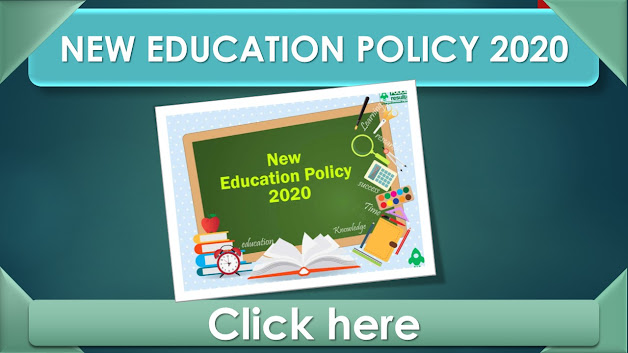18. Transforming the Regulatory System of Higher Education
18.1. Regulation of higher education has been too heavy-handed for decades; too much has been attempted to be regulated with too little effect. The mechanistic and disempowering nature of the regulatory system has been rife with very basic problems, such as heavy concentrations of power within a few bodies, conflicts of interest among these bodies, and a resulting lack of accountability. The regulatory system is in need of a complete overhaul in order to re-energize the higher education sector and enable it to thrive.
18.2. To address the above-mentioned issues, the regulatory system of higher education will ensure that the distinct functions of regulation, accreditation, funding, and academic standard setting will be performed by distinct, independent, and empowered bodies. This is considered essential to create checks-and-balances in the system, minimize conflicts of interest, and eliminate concentrations of power. To ensure that the four institutional structures carrying out these four essential functions work independently yet at the same time and work in synergy towards common goals. These four structures will be set up as four independent verticals within one umbrella institution, the Higher Education Commission of India (HECI).
18.3. The first vertical of HECI will be the National Higher Education Regulatory Council (NHERC). It will function as the common, single point regulator for the higher education sector including teacher education and excluding medical and legal education, thus eliminating the duplication and disjunction of regulatory efforts by the multiple regulatory agencies that exist at the current time. It will require a relook and repealing of existing Acts and restructuring of various existing regulatory bodies to enable this single point regulation. NHERC will be set up to regulate in a ‘light but tight’ and facilitative manner, meaning that a few important matters particularly financial probity, good governance, and the full online and offline public self-disclosure of all finances, audits, procedures, infrastructure, faculty/staff, courses, and educational outcomes will be very effectively regulated. This information will have to be made available and kept updated and accurate by all higher education institutions on a public website maintained by NHERC and on the institutions’ websites. Any complaints or grievances from stakeholders and others arising out of the information placed in public domain shall be adjudicated by NHERC. Feedback from randomly selected students including differently-abled students at each HEI will be solicited online to ensure valuable input at regular intervals.
18.4. The primary mechanism to enable such regulation will be accreditation. The second vertical of HECI will, therefore, be a ‘meta-accrediting body’, called the National Accreditation Council (NAC). Accreditation of institutions will be based primarily on basic norms, public self-disclosure, good governance, and outcomes, and it will be carried out by an independent ecosystem of accrediting institutions supervised and overseen by NAC. The task to function as a recognized accreditor shall be awarded to an appropriate number of institutions by NAC. In the short term, a robust system of graded accreditation shall be established, which will specify phased benchmarks for all HEIs to achieve set levels of quality, self-governance, and autonomy. In turn, all HEIs will aim, through their Institutional Development Plans (IDPs), to attain the highest level of accreditation over the next 15 years, and thereby eventually aim to function as self-governing degree-granting institutions/clusters. In the long run, accreditation will become a binary process, as per the extant global practice.
18.5. The third vertical of HECI will be the Higher Education Grants Council (HEGC), which will carry out funding and financing of higher education based on transparent criteria, including the IDPs prepared by the institutions and the progress made on their implementation. HEGC will be entrusted with the disbursement of scholarships and developmental funds for launching new focus areas and expanding quality programme offerings at HEIs across disciplines and fields.
18.6. The fourth vertical of HECI will be the General Education Council (GEC), which will frame expected learning outcomes for higher education programmes, also referred to as ‘graduate attributes’. A National Higher Education Qualification Framework (NHEQF) will be formulated by the GEC and it shall be in sync with the National Skills Qualifications Framework (NSQF) to ease the integration of vocational education into higher education. Higher education qualifications leading to a degree/diploma/certificate shall be described by the NHEQF in terms of such learning outcomes. In addition, the GEC shall set up facilitative norms for issues, such as credit transfer, equivalence, etc., through the NHEQF. The GEC will be mandated to identify specific skills that students must acquire during their academic programmes, with the aim of preparing well-rounded learners with 21st century skills.
18.7. The professional councils, such as the Indian Council for Agricultural Research (ICAR), Veterinary Council of India (VCI), National Council for Teacher Education (NCTE), Council of Architecture (CoA), National Council for Vocational Education and Training (NCVET) etc., will act
as Professional Standard Setting Bodies (PSSBs). They will play a key role in the higher education system and will be invited to be members of the GEC. These bodies, after restructuring as PSSBs, will continue to draw the curricula, lay down academic standards and coordinate between teaching, research and extension of their domain/discipline, as members of the GEC. As members of the GEC, they would help in specifying the curriculum framework, within which HEIs may prepare their own curricula. Thus, PSSBs would also set the standards or expectations in particular fields of learning and practice while having no regulatory role. All HEIs will decide how their educational programmes respond to these standards, among other considerations, and would also be able to reach out for support from these standard-setting bodies or PSSBs, if needed.
18.8. Such a system architecture will ensure the principle of functional separation by eliminating conflicts of interests between different roles. It will also aim to empower HEIs, while ensuring that the few key essential matters are given due attention. Responsibility and accountability shall devolve to the HEIs concomitantly. No distinction in such expectations shall be made between public and private HEIs.
18.9. Such a transformation will require existing structures and institutions to reinvent themselves and undergo an evolution of sorts. The separation of functions would mean that each vertical within HECI would take on a new, single role which is relevant, meaningful, and important in the new regulatory scheme.
18.10. The functioning of all the independent verticals for Regulation (NHERC), Accreditation (NAC), Funding (HEGC), and Academic Standard Setting (GEC) and the overarching autonomous umbrella body (HECI) itself will be based on transparent public disclosure, and use technology extensively to reduce human interface to ensure efficiency and transparency in their work. The underlying principle will be that of a faceless and transparent regulatory intervention using technology. Strict compliance measures with stringent action, including penalties for false disclosure of mandated information, will be ensured so that Higher Education Institutions are conforming to the basic minimum norms and standards. HECI itself will be resolving disputes among the four verticals. Each vertical in HECI will be an independent body consisting of persons having high expertise in the relevant areas along with integrity, commitment, and a demonstrated track record of public service. HECI itself will be a small, independent body of eminent public-spirited experts in higher education, which will oversee and monitor the integrity and effective functioning of HECI. Suitable mechanisms will be created within HECI to carry out its functions, including adjudication.
18.11. Setting up new quality HEIs will also be made far easier by the regulatory regime, while ensuring with great effectiveness that these are set up with the spirit of public service and with due financial backing for long-term stability. HEIs performing exceptionally well will be helped by Central and State governments to expand their institutions, and thereby attain larger numbers of students and faculty as well as disciplines and programmes. Public Philanthropic Partnership models for HEIs may also be piloted with the aim to further expand access to high-quality higher education.
Curbing Commercialization of Education
18.12. Multiple mechanisms with checks and balances will combat and stop the commercialization of higher education. This will be a key priority of the regulatory system. All education institutions will be held to similar standards of audit and disclosure as a ‘not for profit’ entity. Surpluses, if any, will be reinvested in the educational sector. There will be transparent public disclosure of all these financial matters with recourse to grievance-handling mechanisms to the general public. The accreditation system developed by NAC will provide a complementary check on this system, and NHERC will consider this as one of the key dimensions of its regulatory objective.
18.13. All HEIs - public and private - shall be treated on par within this regulatory regime. The regulatory regime shall encourage private philanthropic efforts in education. There will be common national guidelines for all legislative Acts that will form private HEIs. These common minimal guidelines will enable all such Acts to establish private HEIs, thus enabling common standards for private and public HEIs. These common guidelines will cover Good Governance, Financial Stability & Security, Educational Outcomes, and Transparency of Disclosures.
18.14. Private HEIs having a philanthropic and public-spirited intent will be encouraged through a progressive regime of fees determination. Transparent mechanisms for fixing of fees with an upper limit, for different types of institutions depending on their accreditation, will be developed so that individual institutions are not adversely affected. This will empower private HEIs to set fees for their programmes independently, though within the laid-out norms and the broad applicable regulatory mechanism. Private HEIs will be encouraged to offer freeships and scholarships in significant numbers to their students. All fees and charges set by private HEIs will be transparently and fully disclosed, and there shall be no arbitrary increases in these fees/charges during the period of enrolment of any student. This fee determining mechanism will ensure reasonable recovery of cost while ensuring that HEIs discharge their social obligations.
English Link
- NatNational Education Policy 2020ional
- NEP 2020 ,Part I. SCHOOL EDUCATION
- NEP 2020 ,Part I. Curriculum and Pedagogy in Schools: Learning Should be Holistic, Integrated, Enjoyable, and Engaging
- NEP 2020 ,Part I. Teachers
- NEP 2020 ,Part I, Equitable and Inclusive Education: Learning for All
- NEP 2020 ,Part I, Efficient Resourcing and Effective Governance through School Complexes/Clusters
- NEP 2020 ,Part I, Standard-setting and Accreditation for School Education
- NEP 2020 , Part II, HIGHER EDUCATION
- NEP 2020 , Part II, HIGHER EDUCATION, Institutional Restructuring and Consolidation
- NEP 2020 , Part II, HIGHER EDUCATION, Towards a More Holistic and Multidisciplinary Education
- NEP 2020 , Part II, HIGHER EDUCATION, Optimal Learning Environments and Support for Students
- NEP 2020 , Part II, HIGHER EDUCATION, Motivated, Energized, and Capable Faculty
- NEP 2020 , Part II, HIGHER EDUCATION, Equity and Inclusion in Higher Education
- NEP 2020 , Part II, HIGHER EDUCATION, Teacher Education
- NEP 2020 , Part II, HIGHER EDUCATION, Reimagining Vocational Education
- NEP 2020 , Part II, HIGHER EDUCATION, Catalysing Quality Academic Research in All Fields through a new National Research Foundation
- NEP 2020 , Part II, HIGHER EDUCATION, Transforming the Regulatory System of Higher Education
- NEP 2020 , Part II, HIGHER EDUCATION, Effective Governance and Leadership for Higher Education Institutions
- NEP 2020, Part III, OTHER KEY AREAS OF FOCUS
- NEP 2020, Part III, Adult Education and Lifelong Learning
- NEP 2020, Part III, Promotion of Indian Languages, Arts, and Culture
- NEP 2020, Part III, Technology Use and Integration
- NEP 2020, Part III, Online and Digital Education: Ensuring Equitable Use of Technology
- NEP 2020, Part IV, MAKING IT HAPPEN
हिंदी लिंक
- NatNational Education Policy 2020ional (राष्ट्रीय शिक्षा नीति 2020)
- एनईपी 2020, भाग I। स्कूल शिक्षा
- एनईपी 2020, भाग I। स्कूलों में पाठ्यचर्या और शिक्षाशास्त्र: सीखना समग्र, एकीकृत, आनंददायक और आकर्षक होना चाहिए
- एनईपी 2020, भाग I। शिक्षक
- एनईपी 2020, भाग I, समान और समावेशी शिक्षा: सभी के लिए सीखना
- एनईपी 2020, भाग I, स्कूल परिसरों / समूहों के माध्यम से कुशल संसाधन और प्रभावी शासन
- एनईपी 2020, भाग I, स्कूली शिक्षा के लिए मानक-सेटिंग और प्रत्यायन
- एनईपी 2020, भाग II, उच्च शिक्षा
- एनईपी 2020, भाग II, उच्च शिक्षा, संस्थागत पुनर्गठन और समेकन
- NEP 2020, भाग II, उच्च शिक्षा, एक अधिक समग्र और बहुविषयक शिक्षा की ओर
- एनईपी 2020, भाग II, उच्च शिक्षा, इष्टतम शिक्षण वातावरण और छात्रों के लिए समर्थन
- एनईपी 2020, भाग II, उच्च शिक्षा, प्रेरित, ऊर्जावान और सक्षम संकाय
- NEP 2020, भाग II, उच्च शिक्षा, समानता और उच्च शिक्षा में समावेश
- एनईपी 2020, भाग II, उच्च शिक्षा, शिक्षक शिक्षा
- एनईपी 2020, भाग II, उच्च शिक्षा, व्यावसायिक शिक्षा की पुनर्कल्पना
- एनईपी 2020, भाग II, उच्च शिक्षा, एक नए राष्ट्रीय अनुसंधान फाउंडेशन के माध्यम से सभी क्षेत्रों में गुणवत्तापूर्ण शैक्षणिक अनुसंधान को उत्प्रेरित करना
- NEP 2020, भाग II, उच्च शिक्षा, उच्च शिक्षा की नियामक प्रणाली को बदलना
- NEP 2020, भाग II, उच्च शिक्षा, उच्च शिक्षा संस्थानों के लिए प्रभावी शासन और नेतृत्व
- एनईपी 2020, भाग III, फोकस के अन्य प्रमुख क्षेत्र
- एनईपी 2020, भाग III, प्रौढ़ शिक्षा और आजीवन शिक्षा
- एनईपी 2020, भाग III, भारतीय भाषाओं, कला और संस्कृति को बढ़ावा देना
- एनईपी 2020, भाग III, प्रौद्योगिकी उपयोग और एकीकरण
- एनईपी 2020, भाग III, ऑनलाइन और डिजिटल शिक्षा: प्रौद्योगिकी का समान उपयोग सुनिश्चित करना
- एनईपी 2020, भाग IV, इसे संभव बनाना











Follow Us